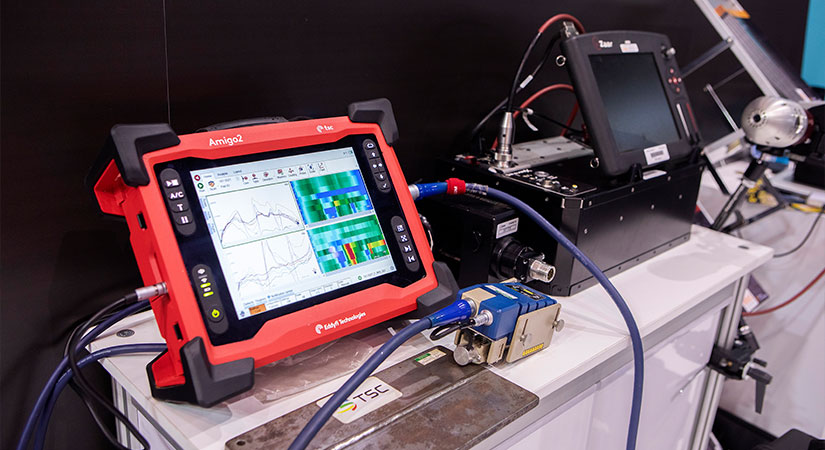Digital Twin 101: The natural successor to IoT?

The connectivity of all things digital – commonly referred to as the Internet of Things (IoT) and Industry 4.0 – are aspects of advancement that we’re all becoming familiar with. However, the new kid on the block, the Digital Twin, is yet to enter the mainstream.
The thing about technology is how fast it advances. The landscape has transformed over the past couple of decades, with ground-breaking tech entering everyday use in ever-shortening timescales. Many people think that the Digital Twin is set to do the same – in fact, that it’s the only logical progression for technology to take.
So, what is it? How does it fit into today’s terrain and what advantages will it bring?
The following demystifies the concept of the digital twin and explains how it might soon become something every business model will embrace.
Digital Twin Explained
In the most simplistic terms, a Digital twin replicates the physical world in a digital landscape. In other words, it’s a virtual replication of a physical object, objects, or system. In addition, the digital version (the twin) is updated in real time to ensure that it’s a virtually identical match.
The concept has been around since the turn of the century. But it’s only in the past few years that the technology to fully utilise the concept has made it viable. It’s created using various sensors and components to collect data. This is then utilised to create a digital replica – or ‘twin’. The quality and depth of the data used will determine how detailed the cyber version will be.
What Can a Digital Twin be Used for?
The possibilities are endless. Imagine the advantages of testing out various strategies and scenarios in cyberspace where a negative result wouldn’t mean costly repairs or, worse, a catastrophic event?
There’s also the ability to edit the digital replica easily, quickly, and at a far lower cost. Run to failure tests can be carried out, high risk simulations become virtually no-risk and the boost to creativity will be exponential as scenarios will no longer be confined to what can be afforded to create a physical testing station.
Just as excitingly (or perhaps even more so), is the ability to work remotely on a project. Engineers will no longer have to physically be with the test subject to work on it. They can study projects across the world or even those that are out of this world, such as in space or on another planet. It’s no wonder that NASA is pioneering the Digital Twin and has long embraced it. As we speak, NASA engineers are working on digital copies of equipment that’s in space. They can plan updates, alterations and repairs in intricate detail, test them and, only when perfected carry out the physical work.
While most businesses won’t have assets that are located quite so far away, the technology represents considerable advantages. When needing to make changes to equipment, the ability to plan it out in detail – and so negate the risk of failure as well as creating a physical model on which to test – will be hugely beneficial.
As the connectivity of devices and applications continues to increase, both in business and our personal lives, so companies will be able to collect and combine all this data in the digital plane. While we’re talking about in the future tense, the digital twin is already wholly evident in an array of industries. Estimates are that around 13% of companies have already adopted the technology and around 62% are considering doing so.
- Automotive: From testing safety features to replicating incidents, digital twins offer tremendous opportunities. This includes testing self-driving AI in the digital environment and testing new components to failure before deciding to utilise them in physical vehicles.
- Retail: Tracking customer behaviours in-store, analysing supply chains, testing cost-cutting solutions, such as new packaging designs, or – as Amazon is already doing – using data to design the optimal layout for their warehouses. Such examples show how digital twins can also be utilised to analyse processes, as well as physical assets.
- Healthcare: This is a prime industry where the digital twin has immense scope. Some of the most exciting opportunities include the application in defining bespoke healthcare for individual patients, as well as more operational needs – like identifying faults in expensive equipment like MRI scanners.
- Manufacturing and engineering: These are fields where Digital Twins are already being well-used, and it makes perfect sense. Firms are designing and testing equipment in a never-before seen way – quickly, effectively and efficiently. This is one landscape where the digital twin already needs little introduction.
The technology is set to revolutionise the way testing and design is carried out. The potential is endless and allows for companies to fully flex their creativity without worrying about the risk – both physically and monetary.
Digital twin tech is already being utilised by technology-driven equipment providers, Nexxis. The ability to plan and create is pivotal to their procurement model that sees them specialise in bringing novel solutions the most complex of NDT and maintenance needs.
Contact us to find out more about our inspection products, or request a quote online.
Carry on reading The Final Frontier: Digital Twins Connect the Physical and Digital Worlds… to find out more.
